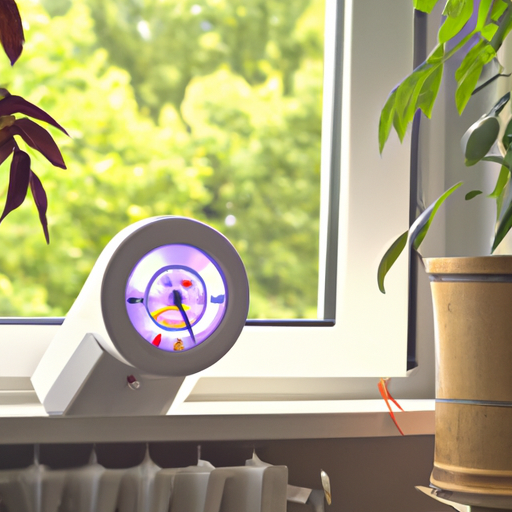How to Use a Dehumidifier to Reduce High Humidity in Your Home
High humidity levels in your home can cause a variety of problems, from mold and mildew growth to musty odors and even health issues. Fortunately, a dehumidifier can help reduce the humidity in your home and make it a more comfortable and healthy environment.
To use a dehumidifier, first determine the size of the unit you need. The size of the dehumidifier should be based on the size of the room or area you want to dehumidify. Generally, a larger dehumidifier is needed for larger spaces.
Once you have the right size dehumidifier, place it in the room or area you want to dehumidify. Make sure the dehumidifier is in a well-ventilated area and away from direct sunlight.
Next, plug in the dehumidifier and turn it on. Most dehumidifiers have adjustable settings, so you can set the humidity level you want. It is best to set the humidity level to between 40 and 50 percent.
Finally, empty the water tank when it is full. Most dehumidifiers have an indicator light that will let you know when the tank needs to be emptied.
By following these steps, you can use a dehumidifier to reduce the humidity in your home and make it a more comfortable and healthy environment.
How to Ventilate Your Home to Reduce High Humidity
High humidity levels in the home can cause a variety of problems, from mold and mildew growth to discomfort and health issues. Fortunately, there are several steps you can take to reduce the humidity in your home and create a healthier living environment.
1. Increase Ventilation:
The most effective way to reduce humidity in your home is to increase ventilation. Open windows and doors when possible to allow fresh air to circulate throughout the house. If you have an attic, make sure the vents are open and unobstructed.
2. Use Exhaust Fans:
Exhaust fans are a great way to reduce humidity in the home. Install exhaust fans in the kitchen and bathroom to help remove moisture-laden air. Make sure to turn them on when cooking or showering and leave them running for at least 15 minutes after you’re done.
3. Install a Dehumidifier:
If you’re still having trouble reducing the humidity in your home, consider installing a dehumidifier. Dehumidifiers work by removing moisture from the air and can be set to a specific humidity level.
4. Check for Leaks:
Leaks can be a major source of humidity in the home. Check for any leaks around windows, doors, and pipes and repair them as soon as possible.
By following these steps, you can reduce the humidity in your home and create a healthier living environment.
How to Use Air Conditioning to Reduce High Humidity in Your Home

High humidity levels in your home can be uncomfortable and can even lead to health issues. Fortunately, air conditioning can be used to reduce the humidity in your home. Here are some tips on how to use air conditioning to reduce high humidity in your home:
1. Set the air conditioner to a lower temperature.
The lower the temperature, the more moisture the air conditioner will remove from the air.
2. Make sure the air conditioner is running at full capacity.
If the air conditioner is not running at full capacity, it will not be able to remove as much moisture from the air.
3. Change the air filter regularly.
A dirty air filter can reduce the efficiency of the air conditioner and prevent it from removing as much moisture from the air.
4. Make sure the air conditioner is properly sized for the space.
An air conditioner that is too small will not be able to remove enough moisture from the air.
5. Make sure the air conditioner is properly vented.
If the air conditioner is not properly vented, it will not be able to remove as much moisture from the air.
By following these tips, you can use your air conditioner to reduce the humidity in your home and make it more comfortable.
How to Use Fans to Reduce High Humidity in Your Home
High humidity in your home can be uncomfortable and can even lead to health issues. Fortunately, there are several ways to reduce the humidity in your home, one of which is to use fans. Here are some tips on how to use fans to reduce high humidity in your home.
1. Place fans in the right locations.
Place fans in the areas of your home that are most affected by humidity, such as the kitchen, bathroom, and laundry room. This will help to circulate the air and reduce the humidity.
2. Use an exhaust fan.
An exhaust fan is a great way to reduce humidity in your home. It works by drawing the humid air out of the room and replacing it with fresh air from outside.
3. Use a dehumidifier.
A dehumidifier is a great way to reduce humidity in your home. It works by drawing the humid air out of the room and replacing it with dry air.
4. Open windows.
Opening windows can help to reduce humidity in your home. This is because the fresh air from outside will help to reduce the humidity in the room.
5. Use a fan to circulate the air.
Using a fan to circulate the air in your home can help to reduce the humidity. This is because the fan will help to move the humid air out of the room and replace it with fresh air from outside.
By following these tips, you can use fans to reduce the high humidity in your home. This will help to make your home more comfortable and reduce the risk of health issues caused by high humidity.
How to Use a Humidistat to Monitor and Reduce High Humidity in Your Home
High humidity levels in your home can cause a variety of problems, from mold and mildew growth to discomfort and health issues. To help reduce and monitor humidity levels, a humidistat can be used. A humidistat is a device that measures the relative humidity in the air and can be used to control a humidifier or dehumidifier.
To use a humidistat, first determine the ideal humidity level for your home. Generally, the ideal humidity level is between 30 and 50 percent. Once you have determined the ideal humidity level, set the humidistat to that level.
Next, install the humidistat in an area of your home that is not affected by drafts or direct sunlight. This will ensure that the humidistat is accurately measuring the humidity levels in your home.
Once the humidistat is installed, it will automatically turn on a humidifier or dehumidifier when the humidity levels in your home exceed or fall below the set level. This will help maintain the ideal humidity level in your home.
In addition to controlling a humidifier or dehumidifier, a humidistat can also be used to monitor humidity levels in your home. The humidistat will display the current humidity level in your home, allowing you to easily monitor the humidity levels.
Using a humidistat is an effective way to reduce and monitor high humidity levels in your home. By setting the humidistat to the ideal humidity level and installing it in an area of your home that is not affected by drafts or direct sunlight, you can ensure that your home is comfortable and free of mold and mildew.




















